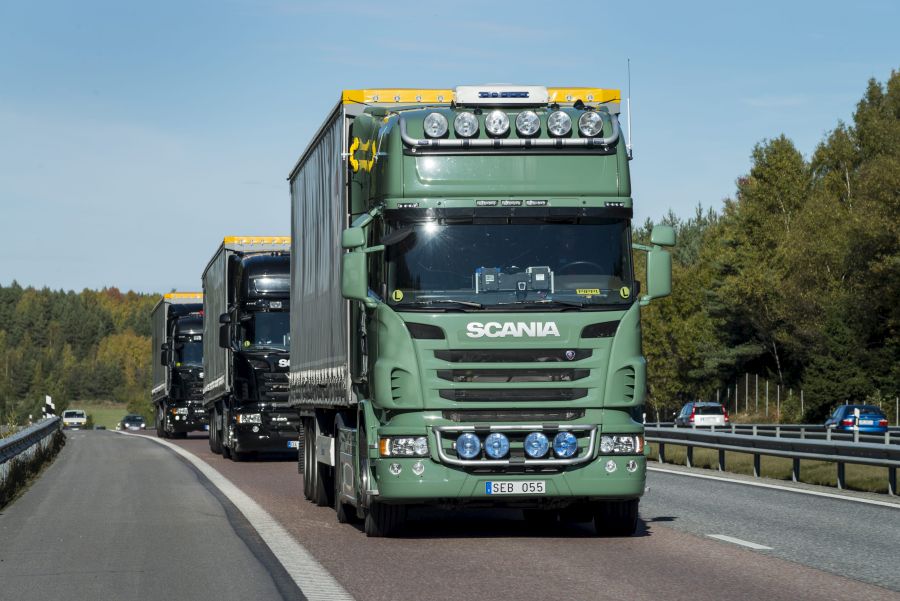
Robohub.org
Autonomous truck platoons travel across Europe

Platooning. Photo: Dan Boman/Scania
A dozen trucks arrived in Rotterdam after traveling across Europe in the European Truck Platooning Challenge. Six different truck makers participated: Scania, Daimler, Volvo, IVECO, MAN and DAF.
Truck platooning involves a convoy of connected trucks that drive and react as a single unit. Acceleration and braking are linked and controlled by computers and WiFi, allowing vehicles to drive much closer together without sacrificing safety while reducing drag and also the cost of drivers and fuel. Each of the six truck manufacturers demonstrated their own platooning technologies.
It is estimated that fuel savings of up to 10% can be achieved with equivalent reductions in CO2 emissions by this type of slipstreaming.
Each of the test vehicles was connected by WiFi, which allowed for the close platooning that wouldn’t be possible with human drivers. Trucks used an advanced Wifi-P connection, developed by NXP, and specially designed for automotive applications. The hi-speed WiFi system enables trucks to drive close together and communicate with each other. Everything that the driver in the first truck sees in front of him is projected onto a screen in the second truck.
“The technology is still very much an assistance feature,” said Jeremy Carlson, senior analyst for autonomous driving at IHS Automotive. “This type of automated vehicle handles 98 percent of the miles, but you still need to have a human driver ready to take some of the scenarios that come with large trucks, including navigating narrow city roads.”
Truck platooning could happen within the next 10 years and most manufacturers are investing in the technology. Daimler recently announced it was investing more than $500 million into its truck platooning technology, and research reports have forecast that more than 7.7 million truck platooning systems could be on roads around the world by 2025.
tags: Automotive, cx-Business-Finance, Daimler, robohub focus on autonomous driving


